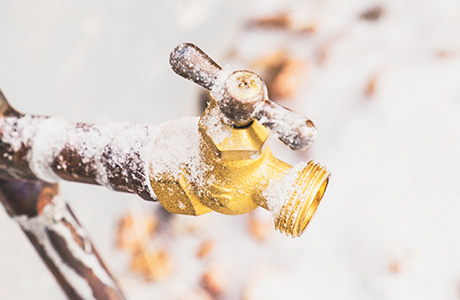Reasons Your Home Might Have Low Water Pressure
Read More...
A common problem for most households and commercial buildings during the winter season is frozen pipes. During the cold season, water expands and exerts pressure on the pipes causing them to burst. However, when the temperatures become too cold, exposed pipes found in unheated spaces like the attic, basement, and crawl spaces or kitchen cabinets freeze frequently. Aside from lines found in unheated interior spaces, pipes near the exterior that lack insulation are also prone to freezing. At Mr. Rooter Plumbing, we provide top-notch pipe repair and pipe replacement to help our customers mitigate plumbing issues brought about by the cold season.
Narrow Down the Search
It is essential to identify the specific area that has frozen by turning on all the faucets to determine which ones are not working. If you notice that one tap has running water and the adjacent faucet is not working, the issue is likely between the pipes. One way to deal with this problem is by leaving your faucets slightly open since the trickle from the working faucets prevents water from freezing and melts the ice. It is advisable to leave the blocked faucets empty to reduce the pressure exerted on the pipes.
Check the Most Likely Areas
If a large part of your home has no water, you should first check the most accessible and likely areas before calling the plumber. If you do not know where to begin your search, check the pipes near or in uninsulated spaces like the attic and basement. You should also pay attention to lines located near cold concrete or cold air spaces. Once you are confident that the indoor pipes have no problem, proceed to the outdoor pipes.
Look for Cracks and Leaks
After identifying the affected areas, the next step should be assessing any cracks caused by the change in pressure. Pressure change usually causes the pipes to crack in the joints or split them lengthwise. By using a flashlight and a mirror, you can be able to look for cracks at the back of pipes located near walls and other places that are difficult to reach. Once you find the leak, you need to close the shut-off valve and contact an expert.
Find the Frozen Areas
Assuming that there are no cracks or leaks, you need to look for the section of the pipe that has frozen water. There are several methods you can use to identify the specific area of the line with free water. One of the ways to check for frozen water is by using an infrared thermometer or your hand to feel the significantly cold areas. Tapping the pipe using a screwdriver handle also helps you identify less "hollow" areas along the exposed lines.
You can use several ways to unfreeze frozen pipes, such as leaving faucets open, using a heat gun or hairdryer, applying heat tape, and adding salt to frozen drains.
At Mr. Rooter Plumbing, we have a team of professional plumbers that provides you with quality plumbing services. Contact us today and get professional help when a plumbing emergency arises.